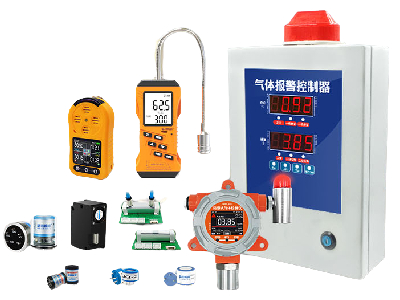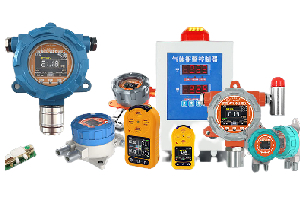The use of toxic gas detectors in industrial and commercial settings has become more prevalent in recent years as companies prioritize workplace safety for employees and safeguarding their assets. Toxic gases can pose serious risks to human health and cause severe damage to property. Therefore, these detectors are indispensable tools in ensuring that everyone is protected from the dangers of toxic gases.
In this comprehensive guide, we will examine the importance of toxic gas detectors in industrial safety and explore the different types of detectors available in the market, as well as their applications.

The Importance of Toxic Gas Detectors for Industrial Safety
Toxic gas detectors play a vital role in industrial safety by detecting the presence of harmful gases in work environments. In certain industries, such as chemical manufacturing or petrochemical refining, workers may be exposed to hazardous gases like carbon monoxide, hydrogen sulfide, ammonia, and chlorine.
Without proper detection, these gases can cause serious harm to employees, such as headaches, dizziness, nausea, respiratory difficulties, and even death. Moreover, these gases can also ignite and explode, causing significant destruction of property and equipment.
Thus, using toxic gas detectors in these industrial settings is crucial to keep employees safe and minimize the risk of accidents and injuries. These detectors work by monitoring the air to detect toxic gas levels and alerting workers and management if levels become hazardous.
Understanding the Different Types of Toxic Gas Detectors and Their Applications
There are several types of toxic gas detectors available in the market, each designed for specific applications. Here, we will discuss the most common types of toxic gas detectors and their applications:
Electrochemical Detectors
Electrochemical detectors are commonly used to detect toxic gases like carbon monoxide and hydrogen sulfide, as well as oxygen levels in the air. These detectors use a chemical reaction between the gas and an electrolyte to generate a current that produces an electrical signal.
One of the significant advantages of electrochemical detectors is that they are highly sensitive and reliable, providing accurate readings of gas levels. Moreover, they are also compact and lightweight, making them convenient for portable use.
Infrared Detectors
Infrared detectors are suitable for detecting gases like methane, propane, and butane, as well as carbon dioxide and carbon monoxide. These detectors work by measuring the amount of infrared light absorbed by the gas.
Infrared detectors are beneficial in environments where there is a risk of explosive gases, as they do not require oxygen to function. They are also highly selective, only detecting specific gases.
Catalytic Detectors
Catalytic detectors are commonly used to detect combustible gases like methane, propane, and ethylene. These detectors use a specially coated wire to catalyze the gas presence and produce heat, which is measured by an electronic sensor.
One of the significant benefits of catalytic detectors is that they are suitable for monitoring large areas, making them ideal for detecting leaks in pipelines and storage tanks.

Photoionization Detectors
Photoionization detectors (PID) are useful in detecting volatile organic compounds (VOCs), such as solvents and pesticides. These detectors work by emitting ultraviolet light onto the gas sample, which ionizes the VOC, producing a measurable electric current.
PIDs are highly sensitive and can detect low levels of VOCs, even in the presence of other gases. They are also fast-acting and can provide real-time readings, making them ideal for leak detection.
Conclusion
Toxic gas detectors are essential tools in industrial safety and protecting lives and property. Using the right type of detector for your specific application is critical in ensuring that your workers and assets are safe from harmful gases.
By understanding the different types of toxic gas detectors and their applications, you can make informed decisions in selecting the appropriate detector for your needs. Remember that proper installation, calibration, and maintenance of these detectors are also crucial in ensuring that they function optimally and provide accurate readings.
Investing in toxic gas detectors may seem like an added expense, but it is a worthwhile investment in protecting your most valuable assets - your employees and your property.






